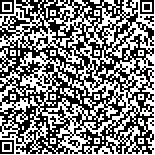| Quote
: |
邓羽丰,罗姝菡,何方婷,武雅婷,肖颖,洪泽慧,裴晓方.椒目油对SD大鼠灌胃给药的急性毒性研究[J].湖南中医药大学学报英文版,2023,43(1):27-33.[Click to copy
] |
|
| |
|
|
| This paper
:Browser 1197times Download 512times |
| 椒目油对SD大鼠灌胃给药的急性毒性研究 |
| 邓羽丰,罗姝菡,何方婷,武雅婷,肖颖,洪泽慧,裴晓方 |
| (四川大学华西公共卫生学院/华西第四医院, 四川 成都 610041;食品安全检测与风险评估四川省重点实验室, 四川 成都 610041) |
| 摘要: |
| 目的 探讨大鼠灌胃椒目油可能出现的急性毒性反应,为后续应用研究提供安全性参考。方法 将SD大鼠随机分为溶剂对照组(n=9)、最低剂量组(n=9)、低剂量组(n=9)、中剂量组(n=9)、高剂量组(n=10)、最高剂量组(n=10),溶剂对照组灌胃玉米油,各剂量组椒目油灌胃剂量依次为0.8134、1.6268、3.2535、6.5070、13.0140g/kg,一次性灌胃给药,观察并记录给药后14d内的毒性反应、体质量和摄食量变化情况。观察期结束后,对仍存活动物进行血液生理指标、血清生化指标、脏器系数及脏器组织病理学检查。结果 椒目油灌胃14d后无大鼠死亡,各组大鼠体质量无明显变化(P>0.05)。与溶剂对照组比较,高剂量组14d进食量增加(P<0.05);最低剂量组、中剂量组、最高剂量组中性粒细胞百分比(neutrophil percentage,NEUT%)水平下降、淋巴细胞百分比(lymphocytes percentage,LYMPH%)水平上升(P<0.05);最低剂量组、低剂量组、中剂量组肌酐(creatinine,CREA)水平下降(P<0.01),左肾系数、右肾系数上升(P<0.05);中剂量组、最高剂量组淋巴细胞绝对值(lymphocyte,LYMP)水平上升(P<0.05);最低剂量组心脏系数下降(P<0.05);高剂量组CREA水平下降、空腹血糖(fasting plasma glucose,FPG)水平上升(P<0.05);高剂量组、最高剂量组左肾系数上升(P<0.05);最高剂量组中性粒细胞绝对值(neutrophil,NEUT)水平下降(P<0.05)。与最低剂量组相比,低剂量组NEUT%水平上升、LYMPH%水平下降(P<0.05),心脏系数上升(P<0.05);中剂量组、高剂量组FPG水平上升(P<0.05);高剂量组右肾系数下降(P<0.05);最高剂量组心脏系数上升(P<0.05)。与低剂量组相比,中剂量组NEUT%水平下降、LYMPH%水平上升(P<0.05)、FPG水平上升(P<0.05);高剂量组FPG水平上升、左肾系数下降(P<0.05);最高剂量组NEUT%、NEUT水平下降(P<0.05),LYMPH%水平上升(P<0.05)。与高剂量组相比,最高剂量组NEUT%及NEUT水平下降、LYMPH%水平上升(P<0.05)。HE染色结果显示,溶剂对照组和各剂量组肝脏、脾脏、肾脏、胃未见明显病变。结论 单次给予15mL/kg椒目油灌胃未引起大鼠急性毒性反应,安全性较高,提示椒目油具有开发为生物制剂的潜在价值。 |
| 关键词: 椒目油 急性毒性 灌胃给药 SD大鼠 血液生理指标 血清生化指标 脏器系数 |
| DOI:10.3969/j.issn.1674-070X.2023.01.005 |
| Received:May 17, 2022 |
| 基金项目:四川省科技厅重点研发项目(2020YJ0233)。 |
|
| Acute toxicity of Jiaomu Oil in SD rats by intragastric administration |
| DENG Yufeng,LUO Shuhan,HE Fangting,WU Yating,XIAO Yin,HONG Zehui,PEI Xiaofang |
| (West China School of Public Health/The Fourth Hospital of West China, Sichuan University, Chengdu, Sichuan 610041, China;Sichuan Provincial Key Laboratory of Food Safety Testing and Risk Assessment, Chengdu, Sichuan 610041, China) |
| Abstract: |
| Objective To investigate the possible acute toxicity of Jiaomu Oil in SD rats by intragastric administration, so as to provide safety reference for subsequent application studies. Methods SD rats were randomly divided into 6 groups: solvent control group (n=9), the lowest (n=9), low-(n=9), medium-(n=9), high-(n=10) and the highest dose groups (n=10). The solvent group was administered corn oil by gavage, while the dose groups were given Jiaomu Oil of 0.813 4, 1.626 8, 3.253 5, 6.507 0 and 13.014 0 g/kg respectively by one-time intragastric administration. After the intervention, the toxicity, body weight and food intake of all groups were observed and recorded within 14 d. After the observation, blood physiological indexes, serum biochemical indexes, organ coefficients and organ histopathologic conditions of the surviving rats were examined. Results No rats died after 14 d of being given Jiaomu Oil by intragastric administration, and the body weights of each group showed no significant difference (P>0.05). Compared with solvent control group, food intake in high-dose group increased on the 14th day (P<0.05), neutrophil percentages (NEUT%) decreased and lymphocytes percentages (LYMPH%) increased in the lowest dose, medium-dose and highest dose groups (P<0.05). Creatinine (CREA) levels in the lowest dose group, low-dose group and medium-dose group decreased (P<0.01), while the left kidney coefficients and the right kidney coefficients increased (P<0.05). The lymphocyte (LYMP) levels in the medium-dose group and the highest dose group increased (P<0.05). The heart coefficients of the lowest dose group decreased (P<0.05). CREA levels were reduced and fasting plasma glucose (FPG) levels increased in high-dose group (P<0.05). The coefficients of left kidney in high-dose group and the highest dose group increased (P<0.05). The levels of neutrophil (NEUT) in the highest dose group decreased (P<0.05). Compared with the lowest dose group, the NEUT% levels in the low-dose group increased, the LYMPH% levels decreased (P<0.05), and the heart coefficients increased (P<0.05). The levels of FPG in medium-dose group and high-dose group increased (P<0.05). The coefficients of the right kidney in high-dose group decreased (P<0.05). The heart coefficient of the highest dose group increased (P<0.05). Compared with the low-dose group, the NEUT% levels in the medium-dose group decreased, the LYMPH% levels increased (P<0.05) and the FPG levels increased (P<0.05). The levels of FPG in high-dose group increased and the coefficients of the left kidney decreased (P<0.05). NEUT% and NEUT levels were reduced in the highest dose group, while the LYMPH% levels increased (P<0.05). Compared with the high-dose group, NEUT% and NEUT levels in the highest dose group decreased, and the LYMPH% levels increased (P<0.05). HE staining showed that there were no obvious pathological changes in the liver, spleen, kidney and stomach in the solvent control group and each dose group. Conclusion A single intragastric administration of 15 mL/kg Jiaomu Oil does not cause acute toxicity in rats, and the high safety indicates that Jiaomu Oil has potential value as a biological agent. |
| Key words: Jiaomu Oil acute toxicity intragastric administration SD rats blood physiological index serum biochemical index organ coefficient |
|

二维码(扫一下试试看!) |
|
|
|
|


